8 Types of Bins You’ll Find in a Hospital
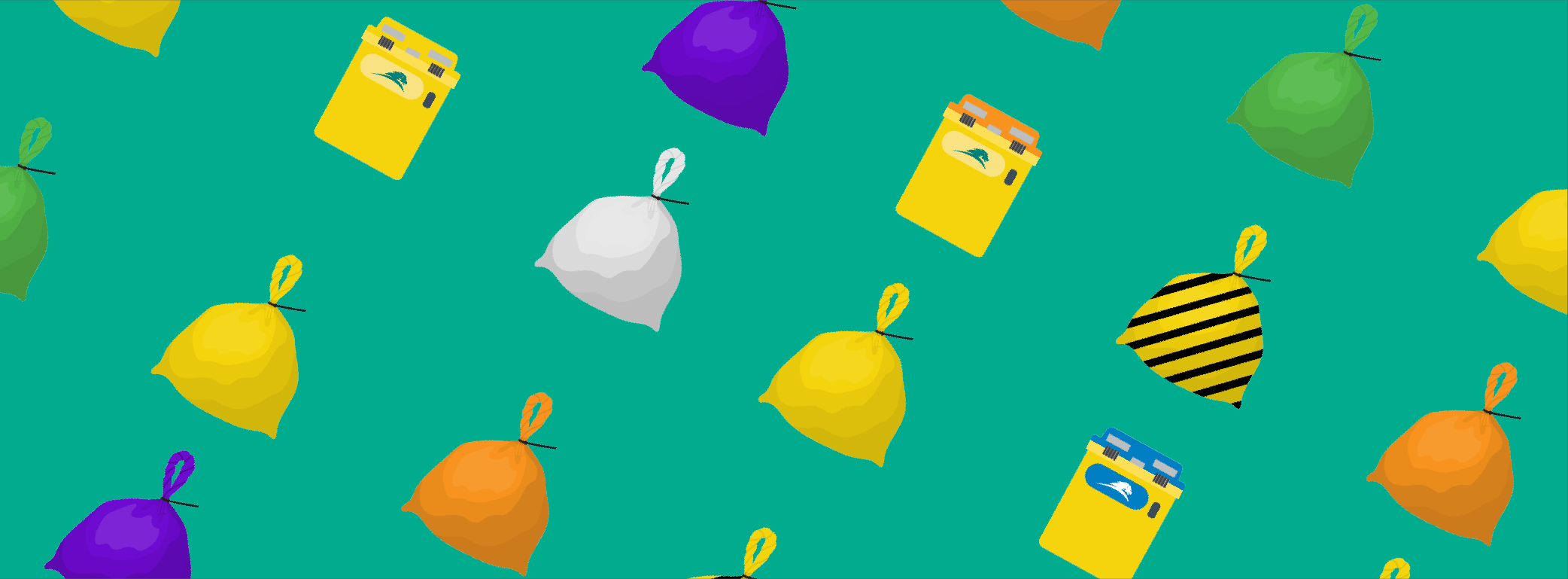
If you think you’ve seen every kind of listicle, prepare to be amazed…
Getting hospital waste management right is important and a huge part of doing so is using the correct bins to dispose of your waste, hence the list the healthcare industry has been eagerly anticipating – the types of bins you’ll find in a hospital.
Let’s jump straight into them (not literally).
8 Types of Bins You’ll Find in a Hospital
Hospitals and community care facilities have a specific waste segregation system in place to ensure the proper disposal and treatment of the various waste types generated to protect people and the planet.
Here’s a breakdown of the common types of bins you’ll find:
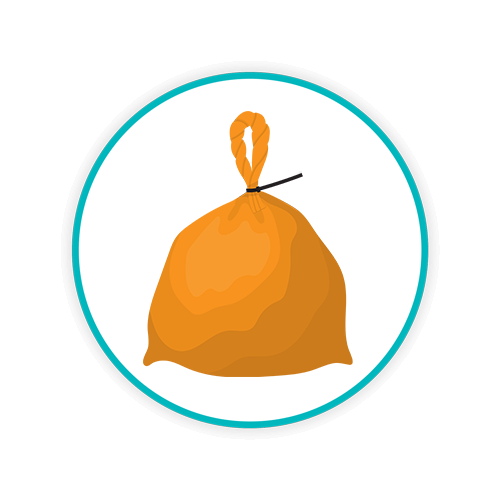
Clinical Waste Bins
Clinical waste is a waste type that has the potential to cause infection, disease, or harm to anyone who comes into contact with it.
Clinical waste bins are essential wherever clinical waste is generated. All hospitals need dedicated bins for the safe storage of various types of clinical waste. These bins come in various shapes, sizes, and colours, each designed to ease the segregation of waste for safe storage before collection and disposal.
What do clinical waste bins look like?
- Orange bag for infectious waste that doesn’t have any other hazardous properties.
- Yellow bag for infectious waste that’s contaminated with medicines or chemicals.
- Sometimes, the bag may be in a bin with the relevant colour-coded sticker. In the case of Sharpsmart’s reusable clinical waste bins, they're a bagless system with a colour-coded sticker to indicate the correct waste.
What goes into a clinical waste bin?
Clinical waste including:
- Waste from an infectious patient or a patient with infectious symptoms.
- Waste from a patient with a history of a known infection.
- Waste material or substances used in lab work containing infectious agents.
Understanding the protocol and regulations for clinical waste disposal is crucial for reducing the risk of contamination and maintaining a safe and compliant healthcare environment.
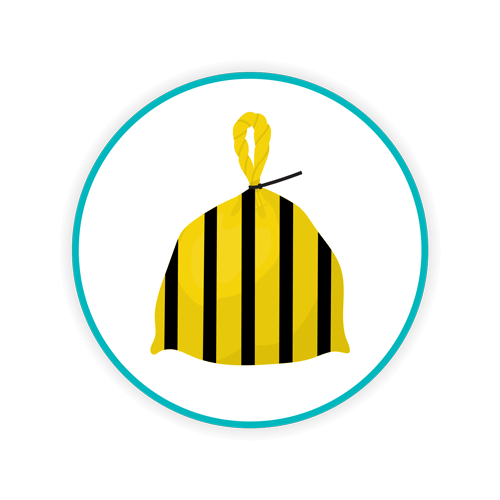
Offensive Waste Bins
Offensive waste is recognisable non-infectious healthcare waste that doesn’t contain any pharmaceutical or chemical substances.
An offensive waste bin (identifiable by its yellow and black colour scheme) keeps non-infectious recognisable waste distinct from infectious counterparts, minimising the risk of contamination. Although this category of waste poses no threat to human health, it still requires proper storage and disposal procedures to ensure safe disposal with more sustainable outcomes such as energy-from-waste.
What do offensive waste bins look like?
- Yellow and Black (Tiger) striped bags.
- These bags may be found inside a rigid bin with a yellow and black colour-coded sticker or label.
What goes into an offensive waste bin?
Non-infectious recognisable waste including:
- Used PPE which hasn’t been contaminated with bodily fluids.
- Dressings from non-infectious patients.
- Cardboard vomit/urine bowls.
Proper offensive waste disposal practices are essential for avoiding the carbon-intensive and cost-heavy overtreatment of waste.
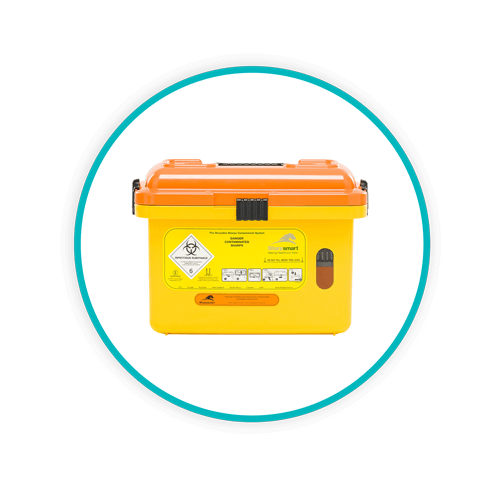
Sharps Waste Bins
Sharps waste is any sharp item that could potentially cut or puncture skin.
Sharps waste bins are crucial for the proper storage and disposal of potentially hazardous and infectious waste that poses a risk of puncturing or cutting the skin. As an organisation that generates sharps waste, you’re bound by legal and ethical responsibilities to adhere to established sharps disposal protocols – using the right colour-coded containers according to the type of waste you’re generating.
Sharps bins come in various shapes and sizes with both single-use and reusable options available. Whether you’re procuring single-use or reusable sharps containers, we’d strongly recommend ensuring they’re ISO-compliant and clinically approved for safety and infection prevention.
What do sharps waste bins look like?
Sharps bin colours are typically:
- Orange lid sharps container for non-medicinally contaminated sharps waste.
- Yellow lid sharps container for sharps waste contaminated with medicines or chemicals other than cytotoxic and/or cytostatic components.
- Purple lid sharps container for any cytotoxic or cytostatic sharps waste.
What goes into a sharps waste bin?
Sharps waste including:
- Needles and syringes.
- Single-use metal items.
- Broken lab ampoules.
Correct sharps waste disposal facilitates the proper treatment and disposal of the waste, reducing the risk of environmental contamination and public health hazards.
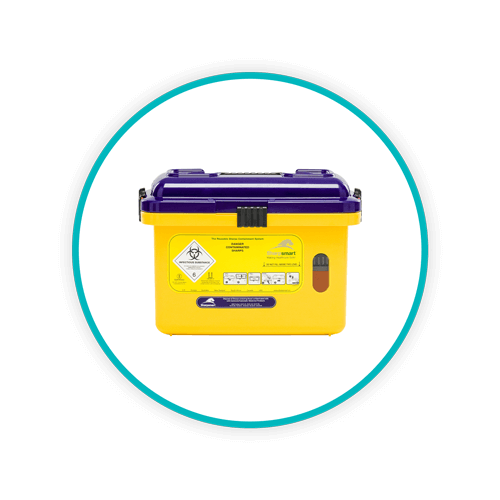
Cytotoxic/Cytostatic Waste Bins
Cytotoxic and cytostatic waste includes these types of drugs and any materials contaminated with them – these medicines are commonly used to treat cancers and other medical conditions and contain one or more hazardous properties.
Cytotoxic/cytostatic waste bins (purple in colour) including rigid containers and specialised clinical waste bags are designed to accommodate both infectious and non-infectious waste contaminated with cytotoxic and cytostatic medications.
What do cytotoxic/cytostatic waste bins look like?
- Purple bags and purple lid containers.
- Sharpsmart’s reusable cytotoxic waste containers are a bagless system with a purple lid, or in the case of our 64-litre containers, a colour-coded sticker.
What goes into a cytotoxic waste bin?
Cytotoxic and cytostatic waste including:
- Cytotoxic/cytostatic medicinal vials and blister packs.
- PPE and materials contaminated with cytotoxic/cytostatic drugs.
- Any needles or syringes used to administer cytotoxic/cytostatic drugs.
Following the procedures for correct cytotoxic/cytostatic waste disposal is critical to ensure safety in healthcare facilities.
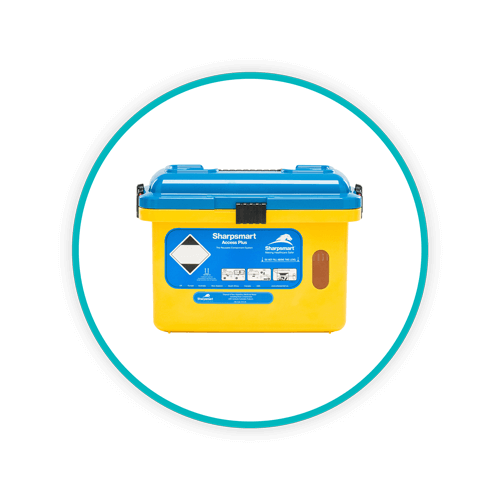
Pharmaceutical Waste Bins
Pharmaceutical waste is any non-hazardous (non-cytotoxic/cytostatic) medicine or medicinally contaminated waste containing a pharmaceutically active agent.
Pharmaceutical waste bins (distinguished by their blue colour) provide a dedicated solution for the disposal of medications and related materials and are most often rigid containers. You can use bags if they’re in a blue-lidded or primarily blue container – you shouldn’t store medicinal waste in loose bags.
What do pharmaceutical waste bins look like?
- Blue lid containers based on physical properties (liquids go in a liquids bin, and solids in a solids bin). Denaturing kits are also commonly used.
- Sharpsmart’s reusable pharmaceutical waste containers are a bagless system with a blue lid, or in the case of our 64-litre containers, a colour-coded sticker.
What goes into a pharmaceutical waste bin?
Pharmaceutical waste including:
- Expired or unused medications.
- Medicinally contaminated pharmaceutical packaging.
- Testing kits.
Reminder: Medicinally contaminated sharps go into a yellow lid sharps bin.
Proper pharmaceutical waste disposal contributes to environmental protection and public safety.
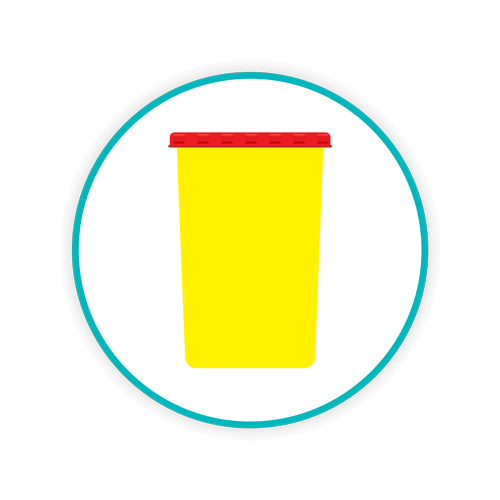
Anatomical Waste Bins
Anatomical waste is waste which contains recognisable human parts. It’s not necessarily hazardous on its own, but can be infectious, contain hazardous chemicals, or both.
Anatomical waste bins (distinguished by their red colour) facilitate compliance with your responsibilities as an organisation to ensure the safe and secure storage and disposal of anatomical waste per regulatory standards and ethical considerations.
What do anatomical waste bins look like?
- Red or red lid containers marked as anatomical waste.
What goes into an anatomical waste bin?
Anatomical waste including:
- Any identifiable human parts such as limbs, organs, and placentas.
- Pathological and biopsy specimens and tissue samples.
- Full or partially used blood bags.
Compliant anatomical waste disposal is vital to prevent potential health hazards.
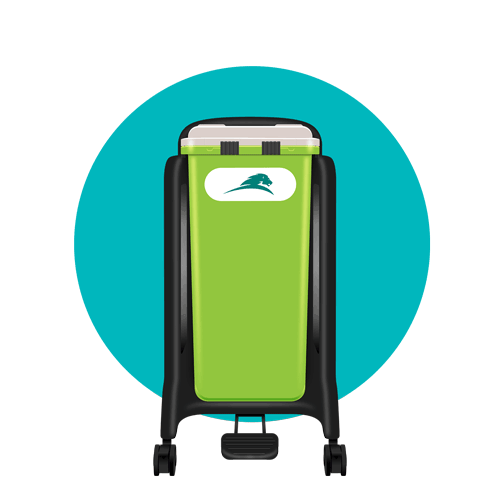
Recyclable Metal Waste Bins
Healthcare metal waste consists of single-use metals and surgical instruments like those used in operating theatres.
Recyclable metal waste bins should have a functional design for ease of use within the operating theatre environment, ideally portable for procedural use and with an aperture that enables the safe disposal of single-use surgical instruments.
What do recyclable metal waste bins look like?
- There’s no fixed colour for recyclable metal waste bins outlined in the Health Technical Memorandum (HTM) 07-01, however, Sharpsmart’s 64 Litre Metal Recycling bin is green with a grey lid.
What goes into a recyclable metal waste bin?
Recyclable metal waste including:
- Single-use metal instruments.
- Laryngoscopes.
- Guidewires.
Responsible recyclable metal waste disposal contributes to sustainability efforts by closing the loop of a high-volume waste type.
Confidential Waste Bins
Confidential waste is waste that contains sensitive documents including patient data or commercially sensitive information that requires shredding before disposal.
Confidential waste bins vary from basic paper bins to portable lockable carts with tamper-proof lids and containers or consoles designed to integrate into office environments offering security for sensitive documents awaiting shredding.
What do confidential waste bins look like?
- Designated lockable console, bag, or rigid bin. There’s no specific colour for confidential waste bins outlined in the Health Technical Memorandum (HTM) 07-01 but it’s recommended to standardise the colour across your organisation.
- Portable carts with tamper-proof lids.
What goes into a confidential waste bin?
Confidential waste including:
- Patient records and consultation notes.
- Admission or discharge records.
- Staff records and payroll documentation.
Secure confidential waste disposal is crucial to protect sensitive information and maintain privacy in adherence to data protection laws.
Other waste bins you’ll find in a hospital include:
- General waste bins
- Recyclable waste bins
- Food waste bins
- Linen waste bins
- Glass waste bins
- WEEE waste bins
- Hazardous waste bins
- Dental waste Bins
- Gypsum waste
- Radioactive waste bins
The exact types and numbers of bins will vary depending on the specific departments and procedures within your hospital. Your organisation’s waste policy should provide clear instructions on what waste goes in which bin to maintain proper segregation in compliance with regulations. See our blog on waste bin colour coding in the UK for more information.
Need Help Finding the Right Bin for Your Hospital?
Whether you’re looking for the right bins for your healthcare waste or consultancy and guidance with your waste management, Sharpsmart are here to help.
We offer much more than bins and collections, we work with your teams within the four walls of your facility to empower clinical staff to manage waste safely, efficiently, and in compliance with regulations.
If you’d like more information or have any questions about your healthcare waste, please don’t hesitate to get in touch.

